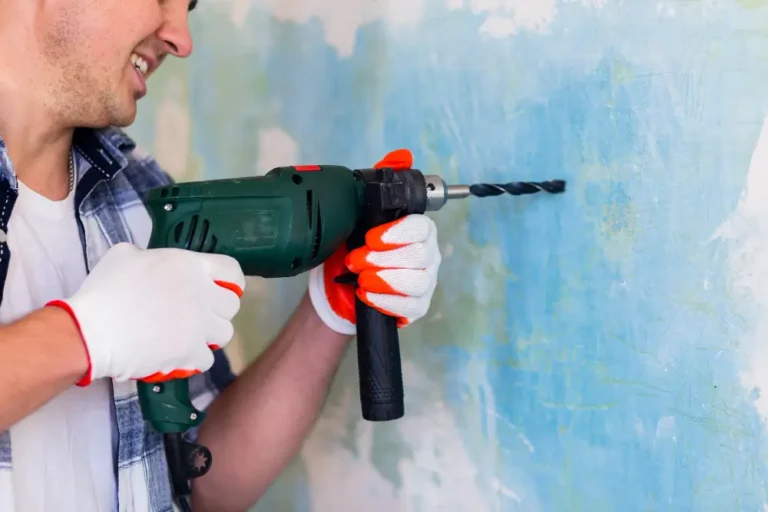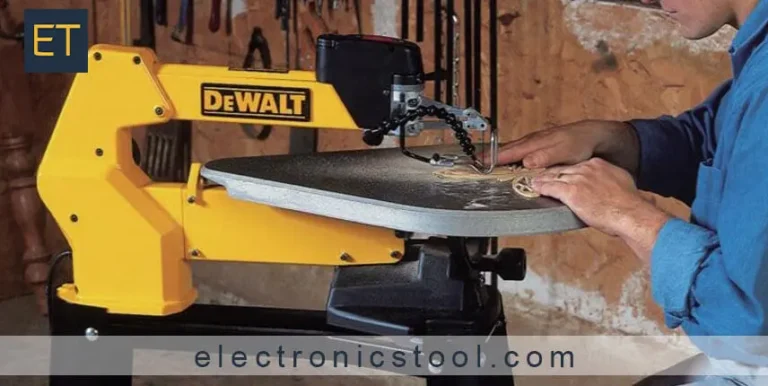Is your favorite saw blade not working the way it used to? That’s what brought you here. Of course, a healthy and sharp tool is the key to successful projects.
Circular saw blades tend to become dull and rough after a certain use or if they are not maintained properly. It is not recommended to replace them every time they are blunt. Sharpening circular saw blades is a handy skill any woodworker must have for rainy days. Even if you provide the sharpening service in your area, you can make a lot of it. You just need the right tools and a little time to learn.
There are several ways to sharpen a circular saw blade effectively, including sharpening with a file, blade sharpening, angle grinding, or with a Dremel. Each method has its benefits and setbacks. For now, we will discuss ‘how to sharpen a circular saw blade with Dremel’. Sharpening with Dremel is the most time-saving and result-oriented method of all. It is something that is not as costly and is easily accessible to hobbyists or regular workers.
First, let’s clear up any common doubts you may have about blade sharpening.

How Do You Know Whether Your Circular Saw Blade Is Sharp or Needs Resharpening?
A dull saw blade has prominent signs that indicate its roughness. You can assume it by a light hand touch. A new one grabs the skin because of the sharp and fresh edges. Apparently, the dull one gets rounded and curved edges.
Another common indication is that the blunt blades are likely to create smoke during operation. They may also burn the workpiece because of the rigid surfaces that rub the wood too hard. The saw’s chainsaw case gets hot quickly as compared to the new one. You will have to put in more effort than usual.
One thing to consider is that it is not always the blunt or rough blade that causes uneven and poor cutting, possibly because the teeth are not equally sharpened.
Can You Sharpen Circular Saw Blades?
The quality and material type of your circular saw blade will determine whether you can resharpen it or not. Let us explain:
If you are using a carbide-tipped blade, it is recommended to get professional service. Carbide saw blades are sharpened with a diamond wheel sharpener, as they are thicker than steel-tooted blades. So sharpening them by yourself might cause them excessive damage.
On the other hand, there are various options for the sharpening of steel-toothed blades. You can sharpen such circular saw blades with a Dremel, a metal file, or a specific blade sharpener. You will learn further about the Dremel method later in our article.
Some of the exceptional blades that cannot be resharpened are low-quality or perhaps low-priced blades. It is because they are not well-built, and sharpening them can hurt the sharpening tool and also the blade itself. It is better to just replace them.
Additional Tip: A high-quality tool is the best investment to make. It may take you more money, but only once. High-quality blades are a one-time investment and a long-term treat. You may resharpen them multiple times, and more importantly, they will achieve better work results.
We hope that these tips clarify your mind. With no more delay, let’s learn to successfully sharpen a circular saw blade with a Dremel.
How to Sharpen a Circular Saw Blade with Dremel:
(in 5 Easy Steps)
Tools needed for sharpening:
Step 1: Prepare your saw blade before sharpening
The first step is to remove the blade for an easy sharpening process. The way you can remove the blade depends on the saw’s model or brand. Check out the user manual for straightforward directions. The most standard way is to use a ring spanner and loosen the bolts in a clockwise direction. Remove the washer and carefully detach the blade.
Next, you have to clean each blade tooth properly using a wire brush. It is not a must-follow step. If your saw blade is already clean and free of dirt, skip this step. Once you are done with it, apply oil to avoid rust and improve cutting performance.
Step 2: Secure your blade in a fixed position
Use a two-screw clamp or a vice grip for a strong grip. Ensure that the blade will hold its position, so the vibrations are minimal. The lower the vibrations, the lesser the chances of injuries while sharpening. Keep in mind that it should not be too tight, as this can bend the blade and ruin its performance.
Step 3: Mark the blade
It is important to mark the teeth from which you start resharpening. It helps you to track when you have sharpened all the teeth once. As mentioned earlier, uneven sharpening causes poor cutting performance.
Step 4: Set up and sharpen the circular saw blade with a Dremel
Attach the suitable bit to your Dremel for blade sharpening. Set the Dremel’s angle to 90 degrees and face it to the left-hand side of the blade.
Turn on the Dremel and let the extended/outer side of the dull teeth come into contact with the Dremel, which is used for cutting wood. Hold it for at least 2–3 seconds for each tooth. Once you are back to the marked teeth, place the Dremel on the right-hand side.
Note: Make sure that you give equal time to each tooth so they are all equally sharpened. You must not grind away excessive material.
Step 5: Reinstall the blade and test it out
Check the sharpness of the teeth with a light hand touch. If you are satisfied with the sharpness, reinstall the blade the same way you removed it.
Finally, your saw blade is back in action. Make a test cut on a small piece of wood. A sharp blade will make even cuts, and it will take less time and effort now. If it is still causing noise or poor cuts, there will be unequal differences in the tooth’s height.
ALSO READ:
- 5 all-time best table saws under $500
- Mastering the art: How to drill into stucco without cracking
- The ultimate guide to the 5 best scroll saws
Pro Sharpening Tips:
- Cool down the saw blade using water periodically, as overheating can damage the blade.
- Maintain a healthy blade by regularly cleaning metal shavings and debris to prevent overheating.
- Stick to the Dremel manufacturer’s recommendations for the specific attachments and accessories you are using.
- Grind each tooth for an equal amount of time for the sake of even cutting.
Safety precautions to consider:
- Clean workspace: A clean workplace helps to focus on the sharpening process. Try to work in a calm environment that is free of distractions. Ensure that the room has bright lighting.
- Safety gear: Safety must be your top priority during the entire process. Wear safety gear to protect your eyes and hands from metal shards or the sharp edges of the blade. Also, use ear protection due to the loud noise while sharpening.
Conclusion
Blunt saw blades destroy the finishing of workpieces, and obviously, nobody wants this to happen. However, you can maintain healthy blades by dedicating a little time to their maintenance. Regular sharpening also enhances the blades’ performance and increases efficiency in projects. Remember, a well-maintained circular saw is not just a tool, but a reliable partner in your woodworking journey. If you follow the provided instructions and guidelines, you can get your favorite saw blade back to its former glory.
We hope that this article was worth your time and will help you sharpen your circular saw blade with a Dremel.
FAQs: Frequently Asked Questions
More Posts You May Like:

How to Drill into Stucco without Cracking | 4 Easy Steps
Spread the loveAre you also fond of decorating your walls or making new improvements to your home? If yes, you might be experiencing doubts like “Can I drill into stucco?” or “How to drill into stucco without cracking it?” Drilling into the stucco is a challenging task until you find the right guide to do […]

The Ultimate Guide to Buying the Best Professional Scroll Saw | Electronics Tool
Spread the loveAre you confused about shopping for the “best professional scroll saw” that fits you? We understand that making a wise purchase is only possible with proper guidance. Well, it feels pretty simple initially, but you must examine multiple features while choosing a proper scroll saw. That includes saw blade type, throat capacity, speed […]

Band saw vs. table saw | which one should you buy first?
Spread the loveDid you find yourself stuck in the decision loom of band saw vs. table saw? We agree that picking the right machinery for your job is the first step towards healthy woodworking. It is okay if you opt for a more important one in the beginning. You might be a learner or have […]

Coming up with a sharpen blade, thanks Jason!!
This content piece was just worth investing my time!! JESUS bless the writer.✋🏻
What a detailed guide! I mean it squeezed everything in one article. Sharpening, pro tips, safety measures.. I have gone through most of this concepts for the very first time. THANKIES!
My expensive circular saw blades were all blunt badly.. tried to resharpen them but anyhow i was not going to win with wrong strategy.
Thanks https://electronicstool.com for such a helpful guide! 😍
What an ‘easy to understand’ guide! 🤙🏻
Keep going!
How wonderfully you resolved my problem! And hope so, many others would have found their go-to solution too! Thanks, https://electronicstool.com
Best guide on Dremel sharpening! Please guide about buying guide for a saw blade sharpener.
I loved the guide, it seems quite simple to sharpen the blades now.
Please guide about other sharpening methods too.
It just took me 20 mins to get a sharp blade like new one! Wonderfully crafted guide!! Thanks.
👍🏻👍🏻
I got my blade sharpened! Thanks to you!! 😃